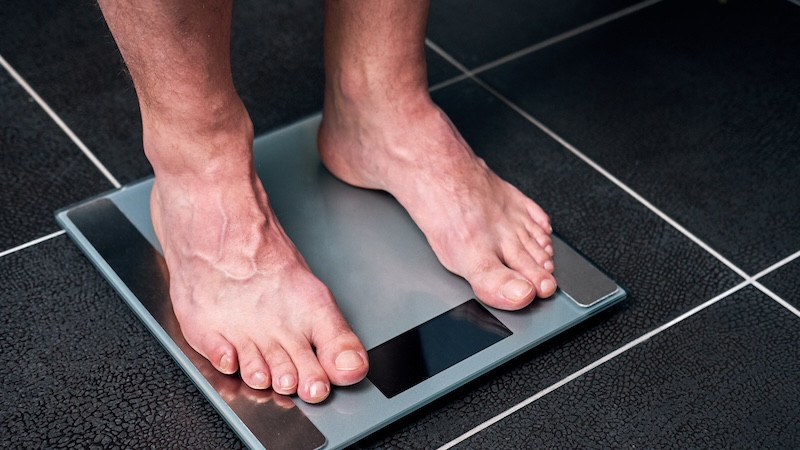To Worry or Not to Worry
Neither time nor denial will heal these aches, pains and warning signs

That old saying, things aren’t always what they seem, can most definitely apply to your health, especially when you’re talking about aches, pains and warning signs. What you believe to be a toothache may actually be related to your sinuses. Fatigue can be a red flag for a variety of prognoses. And if you’re someone who likes checking the internet for every ache and pain, the best advice, doctors say, is don’t always believe what you read. The only way to discover what’s really going on is to check with your doctor.
Knowing common warning signs can help you make informed decisions.
Don’t take your heart for granted
When it comes to your heart, many symptoms come on gradually. It’s wise to pay attention to signs and document them. And, don’t wait too long to take action.
“People accommodate,” says Dr. Christopher Thomas of Virginia Cardiovascular Specialists. “A lot of signs and symptoms are subtle.”
Often people won’t seek medical help because they are afraid to ask questions. “There are no dumb questions,” Thomas says. “If something doesn’t feel right, ask someone. There may be nothing to worry about. Sometimes peace of mind is worth it. Now you know and you can feel better.”
From a cardiac perspective, a classic warning sign is chest pain. “Some people talk about it being pressure or tightness or pain,” Thomas says. “It is usually accompanied by shortness of breath, nausea and sweatiness. Usually cardiac symptoms happen with exertion and get better with rest.”
Women and people with diabetes can display different symptoms without chest pain, such as shortness of breath, a heartburn feeling, fatigue and nausea. “These groups often have nonspecific [symptoms],” Thomas says.
Heart issues come to light when “your heart is asked to do more, such as walking up steps, carrying things, exerting yourself or doing certain tasks in cold weather,” Thomas says.
General exercise intolerance can also be a warning sign. For instance, you notice that you start having difficulty doing something you could do easily six months ago, like walking up steps or folding laundry. “Those are signs that the heart can’t keep up with that level of exertion,” Thomas says.
He finds that many people don’t bring up subtle signs such as waking up in the middle of the night, gasping for air, or being unable to lie flat anymore. “They can be signs of cardiac dysfunction or sleep apnea,” Thomas says. “Sleep apnea [a serious sleep disorder where your breathing stops several times during the night] can affect your lungs and heart. That can lead to problems.”
Listen to what your gut is telling you
Often people attribute gut discomfort to overeating or gas, but having pain in your abdomen or noticing something unusual after a bowel movement is a sign of an unhappy gut.
If you have pain in the pit of your stomach that follows an hour or two after eating meals or wakes you up at night, it could be “acid reflux, ulcer or gall bladder,” says Dr. Ray Keate of Richmond Gastroenterology Associates.
Unrelenting pain can stem from a variety of problems, including diverticulitis and appendicitis, with symptoms such as failure to pass gas, a change in bowel habits and fever with chills and shaking. “You would want to go to the emergency room,” Keate says. “A lot of diagnoses in the ER can be made with CAT scans so we are able to diagnose easier. Blood work and imaging studies may help to pin down a diagnosis as well.”
Taking over-the-counter or prescription painkillers can be associated with abdominal pain, ulcers and bleeding. Diarrhea following a round of antibiotics can be worrisome in regard to C. difficile, a very aggressive diarrhea that can lead to hospitalization or death. “One hundred percent of C. difficile is curable but with a 30 percent relapse rate,” Keate says.
Problems in the bathroom can also signal an issue. Bleeding, black, sticky stools that are hard to wipe and stick to the walls of the toilet are more indicative of bleeding from the upper part of your intestinal track, which could be due to ulcers or another issue. “If you are lightheaded, weak or dizzy, go to the emergency room,” Keate says.
Bright red bleeding after a bowel movement is most often from the colon, he adds, noting that hemorrhoids can cause blood when you wipe with a tissue. “Again, if you have weakness or lightheadedness, that can be an emergency. If stools have blood mixed in or bloody with clots, that is more of an emergency.”
Weight loss when you’re not trying to lose weight can be another sign of trouble. “You don’t want to lose more than 10 percent of your body weight. So if you’re 150 pounds and lose 7.5 pounds, that wouldn’t bother me,” Keate says. “But if your weight loss is over 10 percent of 150 or more than 15 pounds in roughly six months, I would be worried.”
Follow the flow of your urinary tract
Visible blood in the urine can represent signs of a urinary tract infection, kidney stone, kidney cancer or bladder cancer, says Dr. Robert Brown of Virginia Urology.
“Severe pain in the flank area of the back extending to the lower abdomen may be signs of a kidney or ureteral stone and obstruction of the kidney,” he adds. “Flank pain associated with a fever may represent a kidney infection or an obstruction with an infection.”
Difficulty passing urine and the feeling of inability to empty the bladder may represent bladder outlet obstruction, usually from prostate enlargement but sometimes caused by urethral obstruction or, in men, by prostate cancer.
“If these warning signs appear, you should contact your primary care physician or urologist immediately,” says Brown.

Keep those joints moving
The onset of osteoarthritis can be difficult to pinpoint. In its early phases, pain is often intermittent and can be associated with strenuous activity such as jogging or it can occur during recreational sports. “Daily activities such as walking or climbing stairs can become bothersome,” says Dr. Colin Mudrick, who specializes in orthopedic surgery and hip and knee reconstruction at Bon Secours St. Francis and St. Mary’s Medical Centers.
In cases where these symptoms are relatively new – less than four weeks – taking over the counter anti-inflammatory medications and temporarily limiting strenuous activity “would be a place to start,” Mudrick says. “If pain persists despite activity modification and medication, this may be an appropriate time to consult a primary care physician or an orthopedic surgeon.”
Delaying treatment when chronic symptoms are present can cause other parts of the body to compensate, leading to pain elsewhere, he explains.
Daily weight-bearing exercise “can lead to decreased incidence of osteoporosis and helps to keep muscles conditioned,” Mudrick says. “If walking causes significant discomfort, activities such as swimming, water aerobics, or biking are also very beneficial.”
Don’t live in pain
It is estimated that as much as 80 percent of the population will experience a back problem at some point, according to the American Chiropractic Association. That’s just one scenario that leads patients to seek chiropractic care. Common conditions include everything from arthritis, headaches and migraines to chronic joint and muscle pain, sports injuries and occupational hazards such as repetitive movements and sitting all day.
“All of these types of patients and more may benefit from chiropractic evaluation and treatment,” says Dr. Kate Brus, Doctor of Chiropractic at Harbour Pointe Chiropractic and Wellness Center.
Be comfortable in your skin
Warning signs for the skin include skin lesions that bleed, are tender, change color, grow rapidly or develop an irregular shape. “You want to see a dermatologist who can examine the area and biopsy it if indicated,” says dermatologist Dr. Sharon S. Camden of Dominion Dermatology.
These warning signs can indicate melanoma (lesions change color, grow in size, become irregular in shape), basal cell carcinoma (lesions may bleed, become red, raised or tender) or squamous cell carcinoma (lesions may grow quickly, become red, scaly, tender).
The eyes have it
Common eye problems include cataracts, macular degeneration, dry eye and glaucoma. “Patients with diabetes are also at special risk for serious eye disease,” says ophthalmologist Dr. David M. Bowman of Richmond Eye Associates.
With cataracts, most patients will notice a decrease or blurring of vision, Bowman says. “Frequently this is first noticed when driving at night, though many patients notice difficulty reading or seeing the television. Glare is another common symptom.”
Macular degeneration attacks the central part of the vision. “Patients will often notice letters missing from words as they are reading,” Bowman says. “If the condition advances, they may not be able to recognize faces of loved ones. It is important to catch worsening macular degeneration early, because there are good treatments that slow or halt progression of the disease and preserve a patient’s vision.”
Patients with dry eye may notice a scratchy or sandy feeling in the eyes, “what we call a ‘foreign body sensation’,” says Bowman, or they may experience a decrease in vision that fluctuates throughout the day.
Mild dry eye frequently can be treated with over-the-counter artificial tears, though some patients need medications. “All of these conditions are much more easily treated, with a far better prognosis for the patient, if caught and addressed before the patient has noticed a significant decrease in the vision,” Bowman says.
For Women Only
When it comes to warning signs, women need to monitor any abnormal bleeding, pelvic or lower abdominal pain or breast problems. Abnormal bleeding can signal a variety of issues, from hormonal problems to endometrial polyps. Pelvic pain can come from issues that could include ovarian cysts or tumors.
A physical exam or ultrasound can help pinpoint the issue, says Dr. John R. Partridge of Virginia Physicians for Women. “If you have changes in the size of your breasts or pain or leakage and/or a local change in the skin over the breast or it seems irritated, you will also need a physical exam and mammogram or an MRI or ultrasound.”
He notes that diabetes, common in women, can present with symptoms such as inappropriate thirst, frequent urination, excess hunger and an unaccountable weight gain or loss.
Thyroid levels could also be an issue at some point. “The thyroid is the mother hormone for everything else in the body,” Partridge says, noting that chances for thyroid issues increase with age. “If it is not working right, it’s hard for other things to work right.”
Signs of thyroid issues include fatigue, dryness of skin, brittle fingernails or hair being brittle or falling out, bodily swelling in the legs, constipation and chest palpitations.
Keep your pearly whites intact
The most common warning signs of mild tooth decay include tooth sensitivity when eating or drinking something sweet, hot or cold; visible holes or pits in the teeth; and brown, black or white stains on the tooth surface. Dr. Michael Catoggio, general dentist, says, “More serious decay, often damaging to the nerves of the teeth, may cause mild to severe pain when eating, a spontaneous throbbing sensation, ringing in the ears and/or severe sensitivity to hot or colds foods.”
The second most common condition is periodontal or gum disease. Warning signs include bad breath, red or swollen gums, gums that bleed when brushing or flossing, painful or loose teeth and/or gums that appear to be receding. “These are typically a result of the buildup of plaque or calculus on the root surfaces of the teeth which cause inflammation of the surrounding tissues and ultimately the loss of bone,” Catoggio says.
Tooth sensitivity can also be a sign of temporomandibular joint disorder, which can lead to jaw pain, teeth abrasion and eventually “fracture of teeth or tooth loss,” says Dr. Majd Babik of Crossridge Family and Cosmetic Dentistry.
This can stem from grinding your teeth at night. “Some people never know they grind their teeth,” Babik says, noting that they may mistake the pain they have for a migraine. “A night guard can help with clenching or grinding.”
If you have tooth implants and/or a crown and they become loose or have slight movement, you need to go to the dentist. “Also, if you have redness around the implant, puffy tissues or bleeding, that’s a sign to see the dentist,” says Dr. Ursula Klostermyer of Advanced Dentistry of Richmond. “These could be signs of gingivitis or periodontitis. Also if you have crowns and bridges and see darkened margins around the crown line or feel discomfort when you drink cold, check with your dentist for decay.”
Hear me – breathe: ear, nose and throat issues
Sinus or throat infections that don’t go away in 10 days of treatment or that “reoccur three or more times during the year could be a sign of chronic sinus or a throat condition,” says Dr. Anthony M. Giordano of Richmond ENT & Facial Plastics.
Hearing loss that comes on quickly without any other ENT issues could be a sign “of a sudden sensorineural hearing loss that is treated most effectively if treatment starts within two to three weeks of onset,” Giordano says. “Hearing loss that has been going on for more than four weeks could be a sign of fluid in the middle ear.”
Award-winning writer Joan Tupponce writes about a variety of subjects – from business to celebrity profiles – for publications that include O, The Oprah Magazine, AmericanWay, U.S. Airways magazine and AAA World.


